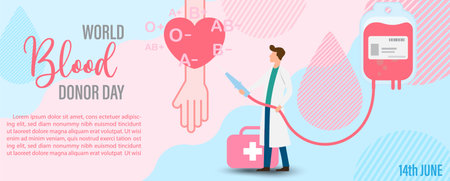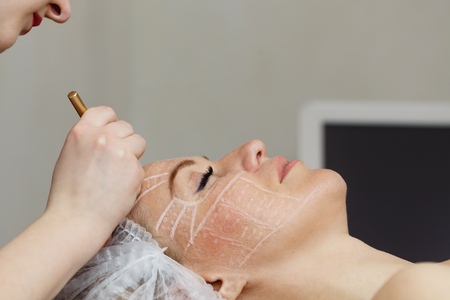Introduction to Chemical Peels
Chemical peels have become an increasingly popular skin treatment option across the UK, offering a targeted approach to rejuvenating and enhancing skin appearance. At their core, chemical peels involve applying a carefully formulated solution to the skin, which helps remove dead or damaged outer layers. This process can address a range of concerns, from uneven skin tone and fine lines to acne scarring and general dullness. For many individuals in Britain, where environmental factors like grey skies, fluctuating temperatures, and high humidity can contribute to tired-looking skin, chemical peels present a reliable method for restoring radiance and confidence. The appeal lies not only in their effectiveness but also in their versatility—peels can be tailored to suit different skin types and goals, making them an accessible choice for those looking to combat the specific challenges posed by British weather and lifestyle.
2. Understanding the British Climate
The United Kingdom is known for its distinctive and often unpredictable weather patterns, which can have a significant impact on both skin health and the recovery process following a chemical peel. Understanding these seasonal variations is essential for anyone considering this cosmetic procedure, as the climate directly influences factors such as skin hydration, UV exposure, and environmental irritants.
| Season | Typical Weather Conditions | Potential Impact on Skin & Recovery |
|---|---|---|
| Winter (Dec-Feb) | Cold, damp, low sunlight, frequent wind | Increased dryness, risk of chapping and irritation; slower healing due to reduced humidity |
| Spring (Mar-May) | Mild temperatures, variable rain, occasional sun | Improved hydration but fluctuating pollen counts may cause sensitivity; unpredictable weather requires adaptable aftercare |
| Summer (Jun-Aug) | Mild to warm, periods of strong sun interspersed with rain | Higher UV levels increase risk of pigmentation post-peel; sweating may irritate healing skin; need for consistent SPF protection |
| Autumn (Sep-Nov) | Cooling temperatures, increased wind and rain | Transitional period—skin may react to changing humidity; wind exposure can aggravate delicate post-peel skin |
The British climate is rarely extreme but often humid and windy, with frequent transitions between wet and dry spells. This means that skin is frequently exposed to shifting environmental stressors throughout the year. For example, extended cloud cover may reduce direct sunlight exposure in winter months, which lowers the immediate risk of sunburn after a peel but can also lead to dullness or dryness. Conversely, unexpected bursts of sunshine in spring or summer can catch many off guard, increasing the chance of sun-related complications if proper sun protection isnt maintained. The table above summarises how each season’s unique characteristics can influence your chemical peel results and recovery timeline.

3. Weather-Related Factors Influencing Peel Outcomes
When considering chemical peels in the UK, it’s vital to account for the unique characteristics of British weather and how these can shape both the results and the recovery process. Three main environmental elements—humidity, rainfall, and ultraviolet (UV) exposure—have particular significance in this context.
Humidity: A Double-Edged Sword
Britain is known for its relatively high humidity, especially outside of central heating season. While increased moisture in the air can help prevent excessive dryness or flakiness post-peel, it also means that the skin may take a little longer to shed dead layers. This slower desquamation can result in a more gradual reveal of fresh skin, which some may find beneficial for discretion but others might find frustrating if seeking quick results.
Rainfall: Recovery Challenges
The UK’s frequent rain showers can be both a blessing and a curse during peel recovery. On one hand, damp conditions mean that windburn and over-drying are less likely compared to drier climates. However, wet weather often encourages the use of hoods, scarves, or umbrellas close to the face, which can inadvertently irritate sensitive post-peel skin or introduce bacteria. It’s worth being mindful about keeping treated skin clean and avoiding unnecessary friction during this vulnerable period.
UV Exposure: The Subtle Risk
British weather rarely conjures images of blazing sunshine, but UV exposure remains a risk even on overcast days. Freshly peeled skin is particularly sensitive to sun damage, and while clouds do filter some rays, up to 80% of UV radiation can penetrate through. This makes diligent daily use of broad-spectrum sunscreen a non-negotiable part of aftercare—even if the skies appear typically British and grey. Neglecting sun protection can lead to unwanted pigmentation changes or delayed healing.
Summary: Navigating British Conditions
In summary, Britain’s signature climate—marked by humidity, persistent rainfall, and variable sunlight—requires special attention before and after a chemical peel. Adapting your aftercare routine to suit these local factors will not only improve comfort but also optimise your chances of achieving healthy, radiant results.
4. Recovery Considerations in Different Seasons
Chemical peel recovery in the UK is not a one-size-fits-all process—each season brings unique weather conditions that can affect healing and results. Tailoring your post-peel care to the British climate throughout the year will help minimise complications and optimise skin outcomes. Below, we break down practical advice for each season, so you can plan your treatment and aftercare with confidence.
Winter: Combatting Dryness and Indoor Heating
British winters are marked by cold air, biting winds, and low humidity—factors that draw moisture out of freshly treated skin. Central heating compounds dryness indoors. To promote smooth recovery:
- Hydration: Use a gentle, fragrance-free moisturiser multiple times daily.
- Avoid hot showers: Hot water strips essential oils from the skin.
- Humidifiers: Consider using one at home to counteract dry indoor air.
Spring: Navigating Pollen and Unpredictable Weather
Springtime in the UK means fluctuating temperatures, increased UV exposure, and high pollen counts. Sensitive, post-peel skin may react more easily to allergens and sun:
- Sunscreen: Use broad-spectrum SPF 30+ even on cloudy days.
- Pollen protection: Minimise outdoor exposure during high pollen counts if prone to allergies.
- Layering: Wear hats or scarves as physical barriers on breezy days.
Summer: Managing Sun Exposure and Heat
The British summer might be milder than many countries, but UV rays remain potent. Increased sweating can also irritate healing skin:
- Avoid peak sun: Stay indoors or seek shade between 11am–3pm.
- Reapply sunscreen: Especially after sweating or towelling off.
- Loose clothing: Opt for breathable fabrics to reduce friction and overheating.
Autumn: Transitioning with Moisture Swings
The shift from summer warmth to autumn chill brings alternating dampness and dryness. Skin may require extra support adapting to these changes:
- Moisturise regularly: Switch to richer creams as humidity drops.
- Avoid over-exfoliating: Let your skin barrier recover fully before resuming active products.
- Layer up outdoors: Protect new skin from brisk winds with lightweight scarves or collars.
Chemical Peel Aftercare by Season: Quick Reference Table
| Season | Main Risks | Key Recovery Tips |
|---|---|---|
| Winter | Dryness, wind chill, indoor heating | Hydrate frequently, avoid hot showers, use humidifier |
| Spring | Pollen, variable weather, increased sun | Sunscreen daily, protect against allergens, dress in layers |
| Summer | UV exposure, sweat irritation | Avoid midday sun, reapply SPF, wear loose clothing |
| Autumn | Damp/dry swings, wind | Add richer moisturisers, avoid exfoliation, shield skin outdoors |
Tuning your chemical peel aftercare routine to the distinct character of each UK season is a small step that can make a significant difference in comfort and results. Always consult your practitioner for specific product recommendations tailored to your individual needs and the current weather conditions.
5. Aftercare Recommendations for the UK
Post-peel aftercare is crucial, especially when factoring in the ever-changing British weather. The UKs mix of cool, damp days and unpredictable sunlight requires a tailored approach to ensure optimal healing and results after a chemical peel. Here are some practical, locally-relevant tips and product suggestions:
Moisturisation Matters
The UKs humidity can fluctuate dramatically, especially between seasons. Opt for a gentle, fragrance-free moisturiser such as CeraVe or E45 Cream to maintain hydration without irritating freshly peeled skin. Apply liberally several times a day—particularly if you spend time outdoors in wind or cold.
Sun Protection: Not Just for Summer
Contrary to popular belief, sun protection is essential year-round in Britain. Even on overcast days, UV rays penetrate clouds and can damage sensitive post-peel skin. Use a broad-spectrum SPF 30 or higher; British pharmacy staples like La Roche-Posay Anthelios or Boots Soltan Face are reliable choices. Reapply every two hours if you’re outside.
Shelter from the Elements
Wind and rain can aggravate healing skin. Consider wearing a wide-brimmed hat or using an umbrella during blustery spells. Scarves made from soft natural fibres can also provide gentle protection against the chill without causing friction.
Avoid Overheating Indoors
Central heating dries out the air, which can dehydrate your skin further. Use a humidifier at home or place bowls of water near radiators to keep moisture levels up.
Local Product Picks
If you prefer British brands, try Simple’s Kind to Skin range or Aveeno products—both widely available and formulated for sensitive complexions commonly found in the UK. Always check ingredient lists for alcohol or fragrance, which may irritate post-peel skin.
Key Takeaway
Your best aftercare strategy combines diligent moisturising, steadfast sun protection (even in winter), and shielding your skin from both cold winds and indoor heating. Choosing locally-available, gentle skincare products designed for the British climate will help ensure your chemical peel recovery goes smoothly.
6. FAQs: Climate Concerns and Common Misconceptions
The unpredictable British weather often raises a number of questions and concerns for those considering chemical peels. Below, we address some of the most frequently asked questions and common myths surrounding the impact of our climate on peel results and recovery.
Does rain or damp weather affect my peel recovery?
One of the most common worries is whether the famously damp British climate can interfere with healing. While high humidity can sometimes reduce dryness and flaking after a peel, it is not a substitute for proper post-treatment care. Always follow your practitioner’s advice regarding moisturisers and avoid exposing freshly treated skin to heavy rain, as this could introduce bacteria or irritants.
Is sunlight in the UK strong enough to worry about after a peel?
There is a persistent myth that because the UK is often overcast, sun protection isn’t necessary after a chemical peel. However, even cloudy days allow UV rays to penetrate, which can increase sensitivity and risk of pigmentation issues post-peel. Daily use of broad-spectrum SPF is non-negotiable—don’t be lulled into complacency by grey skies.
Can I have a peel during winter months?
Some believe that peels should only be performed in summer due to increased sunlight exposure. In reality, many practitioners recommend autumn and winter as ideal times for chemical peels, since you are less likely to be outdoors or exposed to intense sunlight. Just remember that cold winds can also dry out freshly peeled skin, so wrap up and moisturise accordingly.
Will central heating at home impact my results?
British homes rely heavily on central heating during much of the year, which can dry out indoor air and potentially slow skin recovery or increase flakiness. Using a humidifier and applying hydrating products can help mitigate these effects for optimal healing.
What about pollution or city weather?
Urban environments in the UK—think London or Manchester—can expose your skin to more pollutants post-peel. While this doesn’t mean you should avoid peels if you live in a city, it does mean you should be diligent with cleansing and barrier-protecting skincare during recovery.
Bottom line:
No matter where you are in Britain, understanding how local weather factors interact with your skin post-peel—and following professional advice—will ensure safer recovery and better results.
7. When to Seek Professional Advice
While many people successfully recover from chemical peels at home, the unpredictable British weather can sometimes introduce unexpected challenges. Its important to distinguish between normal post-peel effects and signs that warrant a visit to a skincare specialist. If you notice persistent redness, swelling, or blistering that worsens during periods of high humidity or after exposure to cold, damp conditions, these may be indicators that your skin is struggling to heal properly. Similarly, if scabbing becomes excessive or you develop signs of infection such as oozing or an unusual odour, don’t hesitate to seek professional help. Weather-related complications—like heightened sensitivity following sudden temperature changes or exacerbated dryness from central heating—can interfere with healing and even affect the final results of your peel. In the UK’s often changeable climate, it’s sensible to err on the side of caution. Consulting a dermatologist or aesthetician familiar with British weather patterns ensures you receive tailored advice and timely interventions, helping you achieve the safest and most effective recovery possible.

